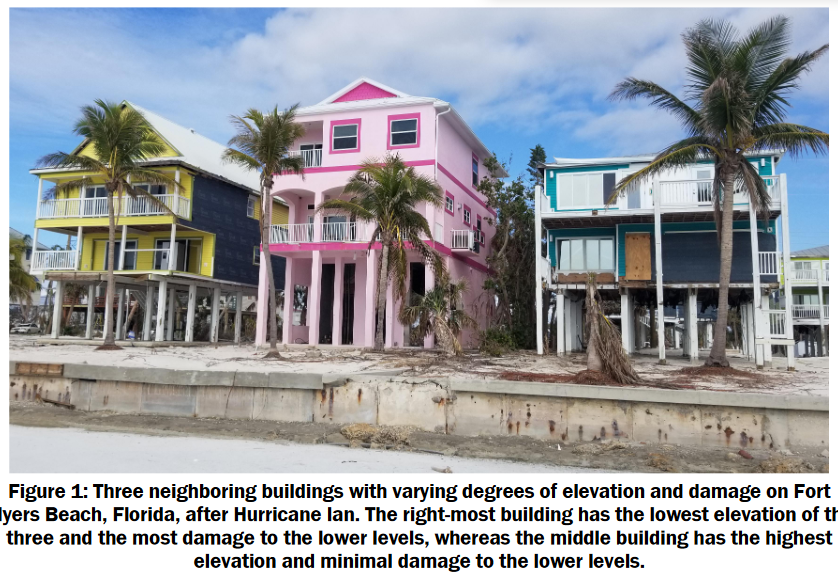New FEMA report offers insight, advice
FEMA is out with the first of likely several reports on Hurricane Ian damage, this one with an eye on building higher, and the American Society of Civil Engineers has released a report its says marks a milestone in advancing flood-resilient building design. It’s all in this week’s Flood Digest.
Hurricane Ian Report: FEMA last week released the report Designing for Flood Levels Above the Minimum Required Elevation After Hurricane Ian – Recovery Advisory 1. This is the first of likely several reports from FEMA’s Mitigation Assessment Team (MAT), part of its Building Science Disaster Support Program. “Flooding in Florida from Hurricane Ian in 2022 extended far beyond mapped Special Flood Hazard Areas (SFHAs) and often exceeded base flood elevations (BFEs) depicted on the Flood Insurance Rate Maps (FIRMs), by several feet in some areas,” the report states.
The report’s purpose is to provide insights regarding building improvement opportunities. While mostly educational, it does provide guidance on elevating buildings to minimize flood damage in cases where flood levels exceed the minimum required elevation. While not addressed in this Recovery Advisory, FEMA recommends that buildings within a hurricane-prone region that are retrofitted to account for additional flood elevation also be retrofitted to resist high-wind hazards.

From the FEMA report Designing for Flood Levels Above the Minimum Required Elevation After Hurricane Ian Recovery Advisory 1
Civil Engineers Report: The American Society of Civil Engineers (ASCE) has released a new supplement to the 2022 edition of its widely used standard, titled ASCE/SEI 7: Minimum Design Loads and Associated Criteria for Buildings and Other Structures (ASCE 7-22). The release, it says, marks a milestone in advancing flood-resilient building design. It focuses on flood load provisions and introduces significant improvements to enhance the resilience of buildings against extreme flood events. This update surpasses the previous edition, which primarily focused on the 100-year flood hazard, by implementing minimum recurrence intervals of 500-, 750-, and 1000-years to improve structure reliability throughout its design life.
The new supplement adopts risk-based approaches and aligns with the prevailing trend of using higher minimum recurrence intervals to enhance building design resilience. The supplement ensures flood load calculation consistency with other hazards addressed in the standard, such as wind and seismic design, which also use higher recurrence intervals for load calculations.
Also noteworthy: technical updates that include revised minimum design requirements, which incorporate sea level change and adjustments to the calculations of hydrostatic and hydrodynamic loads (such as velocity and scour), wave loads, debris loads, flood load cases, load combinations and stability checks. These updates, it says, reflect a departure from previous versions of ASCE 7 and signify the society’s commitment to integrating climate data into its standards.
LMA Newsletter of 8-7-23

